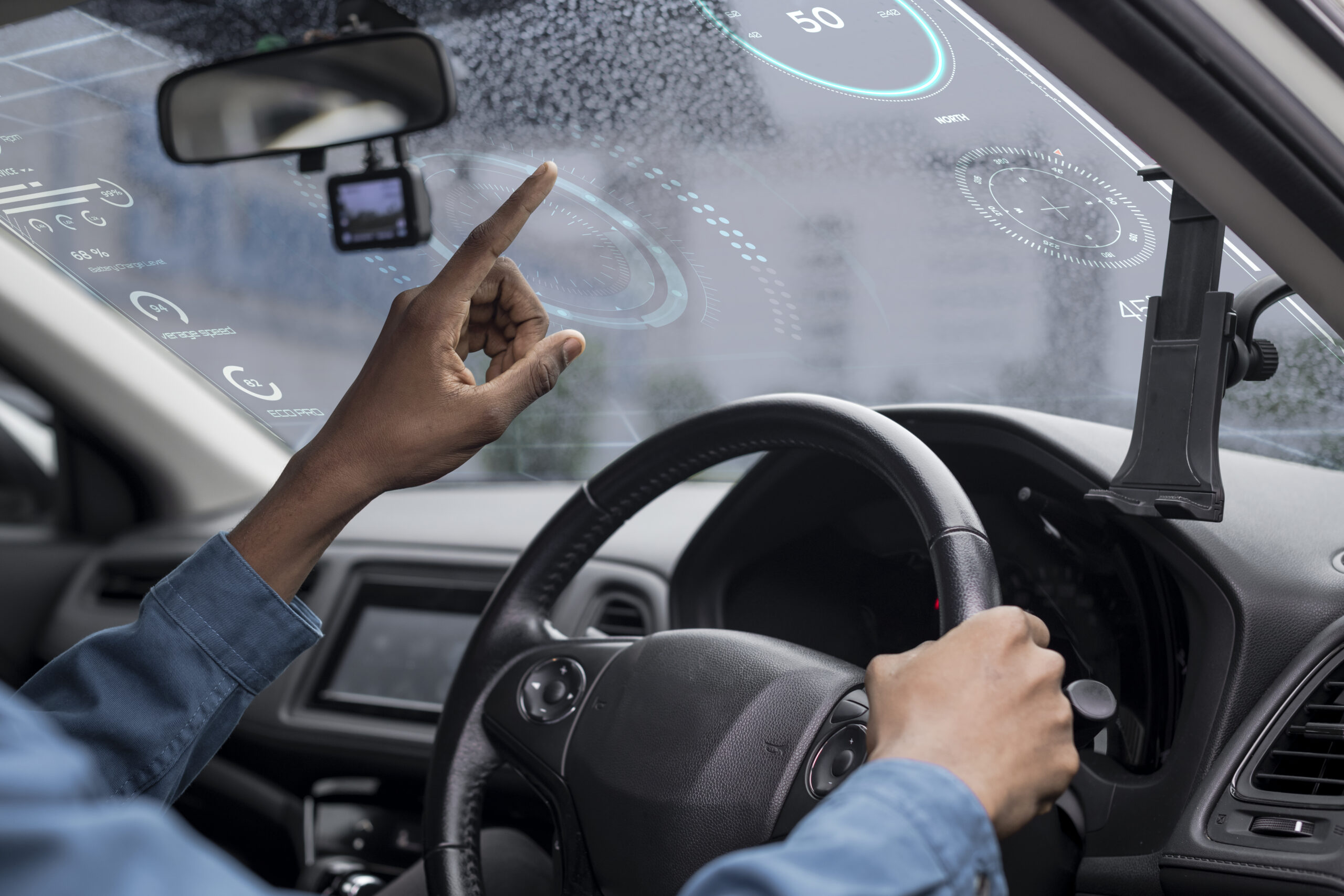A deep dive into vehicle embedded systems
Modern vehicles are packed with complex embedded systems, from infotainment to diagnostics – but how do you test them effectively?
As technology advances, embedded systems have become the backbone of modern vehicles, controlling everything from navigation to safety mechanisms. These systems enhance the driving experience, improve performance and ensure vehicle reliability. However, testing them presents significant challenges, especially in older or closed-loop systems that lack API access. Without proper automation, testing can be slow, inefficient and prone to human error.
This guide explores the world of automotive embedded systems, their challenges and how automation – particularly UI-based testing – offers a practical solution.

Table of Contents
Understanding embedded systems in vehicles
What are embedded systems in vehicles?
Embedded systems in vehicles are specialised computing units designed to perform specific tasks within the automotive environment. Unlike general-purpose computers, these systems are integrated into the vehicle’s hardware and operate in real-time to manage critical functions.
Common examples of vehicle-embedded systems include:
- Infotainment systems – Touchscreen controls, media playback, and smartphone integration.
- GPS navigation – Real-time route mapping and traffic updates.
- Diagnostics systems – Monitoring vehicle performance and detecting faults.
- Safety features – Airbags, traction control, and emergency braking.
- ECU (Engine Control Units) – Managing fuel injection, emissions, and performance tuning.
The role of embedded systems in modern vehicles
Embedded systems have transformed modern vehicles by enhancing functionality, safety, and efficiency. Their impact is seen in several areas:
Enhancing the driver experience – Features like touchscreen infotainment, smartphone integration and climate control create a more comfortable and connected environment.
Improving vehicle safety and performance – Advanced Driver Assistance Systems (ADAS), Anti-lock Braking Systems (ABS) and electronic stability control (ESC) contribute to safer driving, while optimised engine management ensures fuel efficiency.
Ensuring software stability and reliability – Embedded systems require rigorous testing to prevent failures that could impact vehicle functionality or safety.
Challenges of testing embedded vehicle systems
Despite their importance, embedded systems present unique testing challenges. Many vehicles still run on outdated or closed-loop software, meaning they are not designed to integrate with modern testing tools. This creates difficulties in data extraction and automation, as these systems often lack API access. Additionally, hardware constraints in embedded environments mean traditional software testing approaches may not be feasible.
While automation can improve efficiency, many traditional approaches struggle to work with embedded systems. Legacy software, lack of API access and complex in-vehicle interfaces create significant roadblocks for standard automation frameworks. Understanding these difficulties is key to finding the right testing approach.
The difficulties of automating embedded system testing
Legacy and closed-loop systems
Many vehicles still rely on software that cannot be updated or modified. Closed-loop systems, common in older models, prevent third-party access, making it difficult to apply modern testing techniques. Without direct access to software components, automation requires innovative solutions.
Lack of API support
Most modern software testing solutions rely on API-based automation, allowing direct communication with the system. However, many vehicle-embedded systems lack APIs altogether, making traditional automation ineffective.
Complexity of in-vehicle interfaces
In-vehicle systems often require interaction with touchscreens, physical buttons and non-standard menus. Manually testing infotainment, diagnostics and control interfaces is not only time-consuming but also highly prone to human error. For instance, a tester manually verifying a GPS system’s responsiveness would need to interact with multiple touch inputs and settings, increasing the risk of inconsistency.
These difficulties force testers to adopt alternative methods. And this is where UI-based automation comes in – allowing testers to interact with vehicle interfaces just as a real user would.
The role of UI-based automation in embedded system testing
What is UI-based automation?
UI-based automation is a method that interacts with software visually, rather than through APIs or direct code injection. It relies on image recognition and Optical Character Recognition (OCR) to navigate on-screen interfaces, simulating real-world usage without requiring back-end access.
How UI-based automation solves embedded system testing challenges
By applying UI-based automation, testers can overcome many of the challenges we mentioned that are posed by traditional testing methods:
Challenge | Solution |
Legacy systems | Works without modifying existing software, making it ideal for older vehicle models. |
No API access | Uses OCR and image recognition to interact with screens. |
Complex interfaces | Simulates real-world user interactions with touchscreens and physical controls. |
If you’d like to know more about automated testing in embedded systems, you’ll find full details on our previous article.
Comparing UI-based automation to traditional testing
If we directly compare traditional testing and UI-based automation we can see how UI-based automation provides a more flexible solution:
Traditional Testing | UI-Based Automation |
Requires API access | Works without APIs |
Limited for modern systems | Supports legacy systems |
Code-based (developer-heavy) | No-code/low-code (accessible to business users) |
Hard to scale for closed-loop systems | Can be applied to any visual interface |
Why low/no-code automation is essential for automotive testing
So why is UI-based automation so important for vehicle testing? Well, most vehicle manufacturers and repair centres do not employ dedicated software developers for testing, meaning test engineers and quality assurance teams need automation solutions that do not require programming expertise. Low-code/no-code tools bridge this gap by allowing non-technical staff to automate tests without writing complex scripts.
How low-code/no-code tools enable scalable testing
- Empowers non-technical staff – Allows testers to automate without programming knowledge.
- Speeds up test development – Rapid test creation and easy modification.
- Improves efficiency – Reduces reliance on manual testing, ensuring consistent and repeatable results.
By enabling rapid test creation, reducing the need for programming knowledge and improving scalability, low-code/no-code automation is transforming how embedded systems are tested. But not all automation tools are created equal – choosing the right solution is critical. Let’s explore how T-Plan stands out as the ideal solution for embedded system testing.
The t-plan advantage: automating embedded system testing
Why t-plan is ideal for embedded system automation
T-Plan provides a powerful and flexible solution for testing vehicle-embedded systems. Unlike traditional tools, T-Plan does not rely on API access, making it compatible with closed-loop and legacy vehicle systems.
With its visual automation capabilities, T-Plan enables users to create automated tests using image recognition and OCR, ensuring seamless interaction with infotainment systems, diagnostics, and control panels.
Key features for embedded system testing
- Image-based automation: Recognises and interacts with on-screen vehicle interfaces.
- OCR (Optical Character Recognition): Extracts text from infotainment systems and diagnostic screens.
- Cross-platform testing: Works across different vehicle brands and system types.
- Automated regression testing: Ensures embedded software updates don’t break existing functionality.
Best practices for testing embedded systems in vehicles
At T-Plan testing is what we do best, so here’s our advice on how to maximise the effectiveness of embedded system testing:
- Use UI-based automation – Overcomes API limitations by interacting with the interface visually.
- Leverage OCR and image recognition – Enhances the ability to read and interpret on-screen data.
- Regularly test software updates – Ensures continued stability and reliability.
- Adopt a low-code approach – Enables business users to participate in test automation.
- Ensure automation scripts handle exceptions – Account for slow-loading screens and input delays.
Conclusion:
Embedded systems are essential to modern vehicles, yet they present unique testing challenges. Traditional approaches often struggle with outdated software, closed-loop environments and limited API access. UI-based automation provides a flexible, scalable solution by interacting with vehicle interfaces visually.
T-Plan’s low-code/no-code automation tools enable businesses to streamline testing without requiring coding expertise, ensuring efficiency, accuracy and compatibility across all vehicle systems.
Looking for a smarter way to test vehicle-embedded systems? Discover how T-Plan can help!


